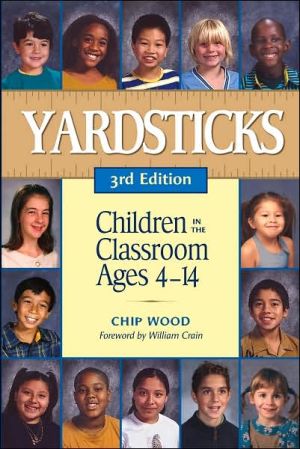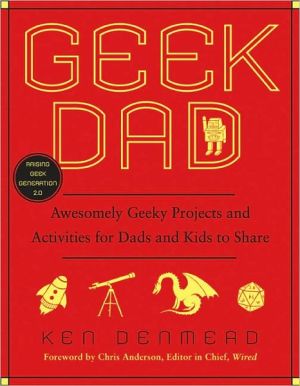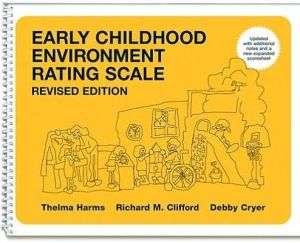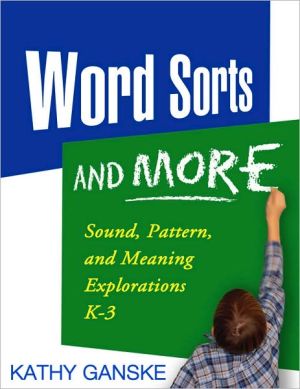Early Childhood Education: Learning Together
Early Childhood Education: Learning Together provides a comprehensive overview of early childhood education. This exciting new text encourages students to understand the need for flexible approaches in their work with children. Early childhood education is not a “one size fits all” proposition, so this text encourages students in multiple ways to reflect upon why they are doing what they are doing. With connections to NAEYC standards, case studies, and essays from real people on the front...
Search in google:
Early Childhood Education: Learning Together provides a comprehensive overview of early childhood education. This exciting new text encourages students to understand the need for flexible approaches in their work with children. Early childhood education is not a “one size fits all” proposition, so this text encourages students in multiple ways to reflect upon why they are doing what they are doing. With connections to NAEYC standards, case studies, and essays from real people on the front lines of early childhood education, students will leave the course with a superior foundation in both the theoretical aspects of ECE and the real world applications of those theories.In developing Early Childhood Education: Learning Together, we bring together the best research and the most effective practices in Early Childhood.We have heard that many students are using their first Early Childhood course to explore their interest in the field - perhaps to discover a new profession or a second career. These comments shaped every aspect of Early Childhood Education: Learning Together. The resulting textbook is infused with real cases, NAEYC standards, and graphs and tables for easy reference and student review.We also understand that college can be a financial challenge for students. Because of this, Early Childhood Education: Learning Together is half the price of comparable introductory texts.
PART ONE An Introduction to Early Childhood1 Working with Young Children 1Early Care and Education 2What Is Care? 2What Is Education? 3Some Purposes of Early Care and Education 4Quality of Early Care and Education 4Applying Child Development Principles 5Reconceptualizing Early Childhood Education 8Early Childhood Educators 8Diverse Biographies and Cultural Identities 9Real Voice: Efrén Michael Léon, Las Cruces, New Mexico 12Thoughtful Individuals 14Professional Development 18Educator Relationships with Other Adults 24Working as Part of a Classroom Team 25Working with Supervisors 27Working with Others to Support Inclusion 28Collaborating with Family Members 29Summary 30Further Activities 312 Children and the Worlds They Inhabit 32Our Rapidly Changing World 33Globalization and Education 34Culture 35Ecological Theories 36What Children Know and How 38What Can We Provide for Young Children? 39Consistency and Predictability 40Practice That Supports Health 42Respect and Equal Access 45Real Voice: Joan Bibeau, Grand Rapids, Minnesota 46Inclusion of Those with Disabilities and Special Needs 53Work Against Poverty and Racism 55Social Justice 56The Developmental-Interaction Approach 57Having a Voice 60Joining with Others 60Speaking Out for Children and Families 61Summary 62Further Activities 633 Children Learning about the World through Relationships 64Early Experience 65Brain Development: The Neuroscience of Experience 65Yin’s and Brad’s Early Experiences 67Attachment, Relationships, and Experience 69An Evolutionary Theory in Cultural Context 69Relationship History = Attachment Quality 70Classifying Attachment 71Being Known 72Real Voice: Meg Gillette, Birmingham, Alabama 74Emotions and Self-Regulation 75The Development of Emotions 75Regulating Emotions 76Theory of Mind 78Applications to Classroom Practice 79Self-Regulation in Classrooms 80Social and Emotional Development in Classrooms 84Electronic Screens: A Relationship? 88Difficult Experiences and Challenging Conversations 904 Children Understanding the World through Play 95The Integrative Role of Play 96Imagination 96Communication of Meaning 97Transformation of Thought 97Problem Solving 98Play in the Lives of Children 98The Roots of Play 98Play in the Preschool Years 99Play in the Primary Grades 100Qualities of Play 101Intrinsic Motivation 101Attention to Means over End 101Freedom from Externally Imposed Rules 102Self-Expression through Symbol and Metaphor 103Categories of Play 104Functional Play 105Constructive Play 105Dramatic Play 106Games with Rules 108Affective Components 109Communicating and Integrating Emotions 109Identity and Mastery 110Playing for and about Power 112Play and Difference 113Play and Gender 113Play and Culture 114Play and Special Needs 115Play Relationships in the Classroom 116Play and Peer Relationships 116Play and Teacher-Child Relationships 116The Role of Play in a Democratic Society 120Play, Imagination, and Social Change 121Debates about Play 121Real Voice: Melissa Dubick, Austin, Texas 122Summary 123Further Activities 125PART TWO Foundations of Early Childhood Education5 Early Childhood Perspectives: Then and Now, Near and Far 126Early Childhood around the World 127Early Education in South Africa 128Early Education in India 130Early Education in the People’s Republic of China 131Views of Childhood in Western History 133Ancient Greece and Rome 133Europe in Medieval Times 134Seventeenth- and Eighteenth-Century Europe 135Nineteenth-Century Europe and the United States 137Twentieth-Century Europe and the United States 141The Progressive Movement, 1890–1930 143Real Voice: Steve Vande Zande, Milwaukee, Wisconsin 146Mid-Twentieth-Century America to Present Times 151The Great Society and Head Start 151Special Education: From Mainstreaming to Inclusion to Continuum of Services 152Standardization, Accountability, and Testing 153Summary 154Further Activities 1556 Theories of Early Childhood: Explanations, Applications, and Critiques 156What Is a Theory? 157Real Voice: Amy Bolotin, Ridgefield, Connecticut 158Michael’s Story 159Theories Arise in Context 159Psychoanalytic and Psychoanalytically Informed Theories 163Freudian Theory 163Freud’s Immediate Successors 164Contemporary Psychoanalytically Informed Theories of Early Childhood 165Evaluation of the Psychoanalytic Viewpoint 167Revisiting Michael’s Head Start Using Psychoanalytic and Psychoanalytically Informed Theories 167Behaviorist Theories 168Social Learning Theory 168Cognitive Behavioral Theory 169Evaluation of Behaviorist Theory 170Revisiting Michael’s Head Start Using Behaviorist Theories 170Maturational Theories 171Evaluation of Maturational Theories 171Revisiting Michael’s Head Start UsingMaturational Theories 171Constructivist Theories 172Neo-Piagetian Theories 173Evaluation of Piagetian and Neo-Piagetian Theory 173Revisiting Michael’s Head Start Using Constructivist Theory 174Contextualist Theories 174Contemporary Contextualist Theories 176Contextualist Theories and Early Childhood Education 177Evaluation of Contextualist Theory 177Revisiting Michael’s Head Start Using Contextualist Theory 177Humanist Theories 178Maslow’s Hierarchy of Needs 178Humanist Theory and the Early Childhood Educator 178Evaluation of Humanist Theory 178Revisiting Michael’s Head Start Using Humanist Theory 179Developmental Systems Theories 179Transactional Model of Development 179Dynamic Systems Theory 180Identity Theories 181Theories about Gender Identity and Gender Roles 181Postmodern and Feminist Poststructuralist Theories 183Theories of Racial and Ethnic Identity 184Theories about Intelligence 186Intelligence in the Psychological Literature 186Multiple Intelligences 186Summary 187Further Activities 1897 Early Childhood Programming 190Care and Education 191The Role of Continuity 192A Continuum of Care 193Care and Education in the Home 194Family, Friend, and Neighbor Care 194Family Child Care 195Nannies 195Real Voice: Alexis Harper, Bellingham, Washington 196Funding 197Public Funding 197Private Child Care 199Full-Day Child Care 200Center-Based Infant/Toddler Programs 200Faith-Based Programs 201Employer Involvement 201Campus Child Care 202Short-Term Child Care 202Elementary Schools 204Kindergarten 204PK–3 Schools 205Charter Schools and Vouchers 205Homeschooling 205Out-of-School Programs 206Specialized Programs for Infants and Toddlers 207Early Intervention 207Infant Mental Health Services 208Programs for Families 209Parent-Child Programs 209Home Visiting 209Family Literacy Programs 210Child Care Resource and Referral Agencies 211Approaches: Explanation, Application, and Critiques 211Some Early Approaches and Methods 212More Recent Approaches 216Making Approaches Your Own 217Summary 218Further Activities 221PART THREE Knowing All Children “From the Inside Out”: The Observation, Assessment and Teaching Cycle8 Children, Development, and Culture 222Understanding and Applying Child Development Principles 224Basic Principles of Development 224Influences on Development 226Domains of Development 233Physical Growth and Motor Development 235Social-Emotional Development 238Cognitive Development 239Language and Literacy 242Children with Special Needs 247When Difference Requires Diagnosis 248Universal Design 248Real Voice: Sabrina Rotonda Irvin, San Jose, California 249Summary 251Further Activities 2529 Observation: The Roots of Practice 253Observing and Recording 254Noticing and Describing Details 255Watching, Listening, and Analyzing 256Describing, Not Deciding 258Teaching Reflectively 259Reasons to Observe and Record 260To Become a Skillful Learning Partner 261To Frame Experiences and Interactions 262To Communicate with Families and Colleagues 265To Develop Professionally 268The How of Observing and Recording 269What to Observe and Record 269Respecting Confidentiality 270Being Aware of and Examining Biases 271Real Voice: Elaine Chu, New York, New York 272Observing Continuously over Time 273The Practicalities of Observing and Recording 274Selecting Methods 274Analyzing Data 279Synthesizing Findings 280Making Observation and Recording Work 281Summary 283Further Activities 28410 Early Childhood Assessment 285The Roots of Assessment 286Assessment and Evaluation 287Formative and Summative Assessment 287The Assessment Cycle 287Building Relationships 288Gathering Information 289Interpreting Information and Deciding What to Do 290Taking Action 291The Purposes of Assessment 292Evaluative Decisions 292Curricular Decisions 293Goals and Objectives 294Assessment in a School Context 295Keeping the Focus on Children 295Observation Is the Foundation of Assessment 296Assessment Tools 299Assessing Children from Birth to Three 299Evaluating Three- to Eight-Year-Old Children’s Performance and Progress 300Creating Portfolios of Children’s Work 302Externally Imposed Assessments 306Historical Context 307Early Learning Standards 307Accountability and Power 309Tests and Young Children 309Communicating Assessment Results 312Reports to Families 312Reports to Colleagues 312Real Voice: Joanne Frantz, Columbus, Ohio 315Feedback to Children 316Summary 317Further Activities 319PART FOUR Working with Children and Their Families: Applying What We Know11 Infants, Toddlers, and Two-Year-Olds 320Life with Infants, Toddlers, and Two-Year-Olds 321A Dynamic Period 321Development Is Bumpy 322Influences on Development 323Attachment and Separation All Day Long 326Program Support for Attachment 326Real Voice: Jonnia R. Jackson, Chicago, Illinois 328Separation in the First Few Weeks—and Beyond 329How the Environment Supports Attachment 332The Day with Infants, Toddlers, and Two-Year-Olds 333Playing and Learning 333Play, Friendship, and Interaction 338Planned Experiences 341Planning Space for Infants, Toddlers, and Two-Year-Olds 344Keeping Children Safe 344Features of Space 345Summary 348Further Activities 34912 Preschoolers and Kindergartners 350Life with Preschoolers and Kindergartners 351Physical Development 351Social-Emotional Development 352Cognition 354What Preschoolers and Kindergartners Learn and How 355Social Studies as Core Curriculum 356Language and Literacy 357Real Voice: Rafael Peña, Las Vegas, Nevada 358Activities and Materials 360Technology 366Classrooms for Preschoolers and Kindergartners 368Planning Authentic Experiences 368Scheduling and Predictability 373The Space 376Summary 380Further Activities 38313 First, Second, and Third Graders 384Life with First, Second, and Third Graders 385Physical and Cognitive Changes 386Social-Emotional Changes 388What Children Learn in the Early Grades 389Social Studies 390Real Voice: Sal Vascellero, New York, New York 391Language and Literacy 393Math and Science 398Planning Curriculum 402Ways to Plan 403Planning the Schedule 405Using Space 408Print Rich, Not Print Noisy 411Summary 412Further Activities 413PART FIVE Linking to Home and Community14 Partnering with Twenty-First-Century Families 414Some Background and Definitions 415Historical Roots of Family Involvement 415Defining the Terms: Family Involvement, Partnerships, and Parent Education 415Parent Education and Family Support Programs 416Benefits and Challenges of Teacher-Family Partnerships 419Benefits for Children 419Real Voice: Melisa McNery, Blytheville, Arkansas 420Benefits and Challenges for Families 421Benefits and Challenges for Teachers 421Family Diversities 422Ethnicity, “Race,” and Socioeconomic Class 423Linguistic Diversity and Culture 424Fathers 425Family Configurations 426Knowing about Families 430Will This Information Help My Work with Children? 430Finding Optimal Distance 430Recognizing and Building on Family Strengths 431Establishing Relationships with Families 431Building Trust 431Approaches to Working with Families 432Interactions with Families 434Beginning the School Year 434Back-to-School Nights 435Parent-Teacher Conferences 436Community Gatherings 437Encouraging Families to Volunteer 437Information Sharing between Teachers and Families 438Teacher-Initiated Information Exchange 438Parent-Initiated Information Exchange 439Sharing Information with the Whole Group of Parents 440Addressing Serious Issues 440Collaborating with Other Professionals 440Referrals to Community Agencies and Other Helping Professionals 441Summary 441Further Activities 44315 Policy Issues and Early Childhood Practice 444Policy 445History of Early Childhood Education Policy 446Attitudes about the Role of the Family in the Early Years 447Early Care versus Education/Targeted versus Universal 448Social, Economic, and Health Status of Children 449Why Policy Makers Are Interested in Early Childhood Education 449The Power of Brain Research 451Changing Families 451The Achievement Gap and School Readiness 452Why Early Childhood Professionals Should Be Involved in Policy 455Quality of Early Childhood Programs 456Credentials of Early Childhood Professionals 458Compensation of Early Childhood Professionals 459Access to Professional Development 460What Happens in the Early Childhood Classroom 461Working for Change on the State Level 462Early Learning Systems Initiatives 462School Readiness Initiatives 464State Prekindergarten Initiatives 466Professional Development and Compensation Initiatives 466Professional and National Organizations and Agencies 467Real Voice: Eva Hansen, Fayetteville, North Carolina 468Summary 469Further Activities 471Appendix A NAEYC Code of Ethical Conduct 472Appendix B Convention on the Rights of the Child 479References 488Glossary 501Credits 508Index 511








